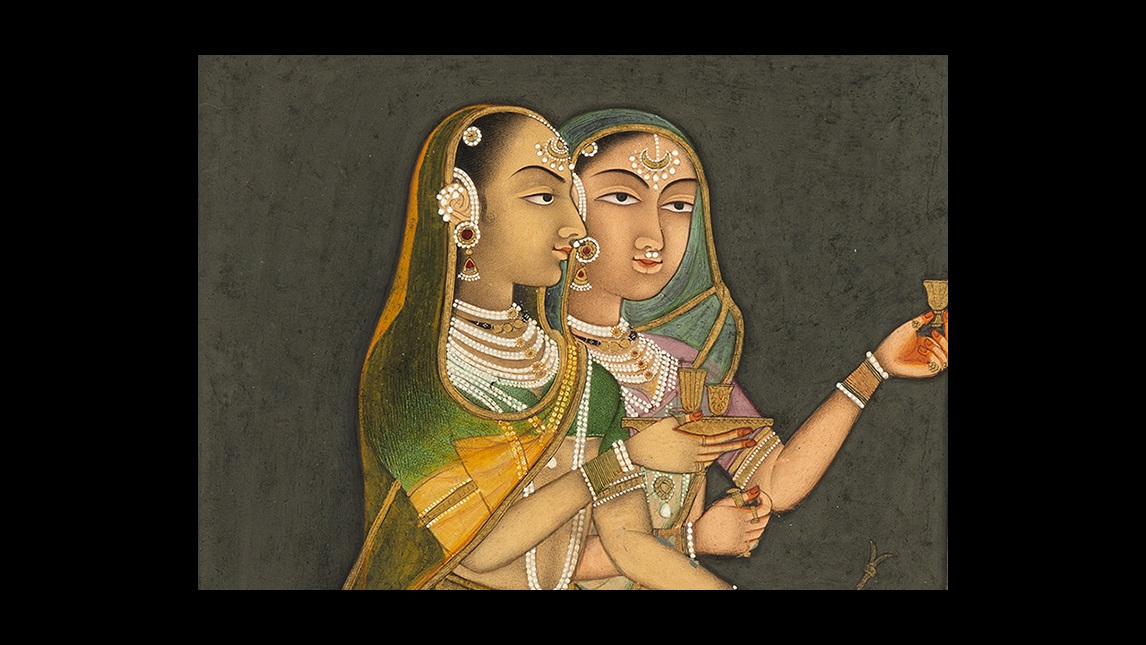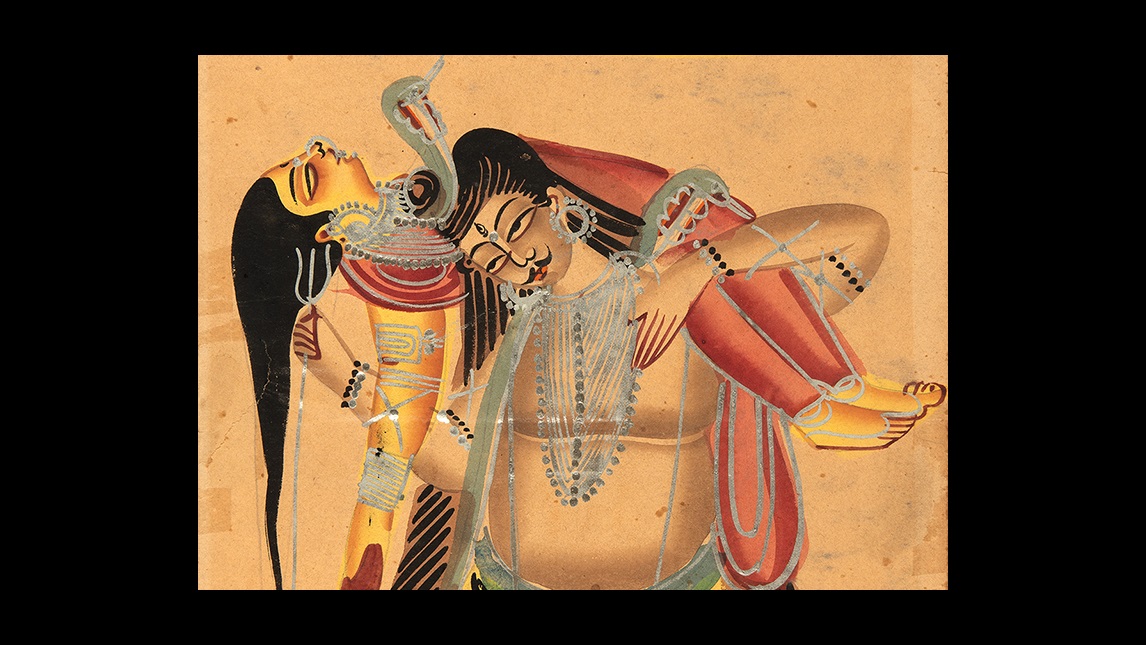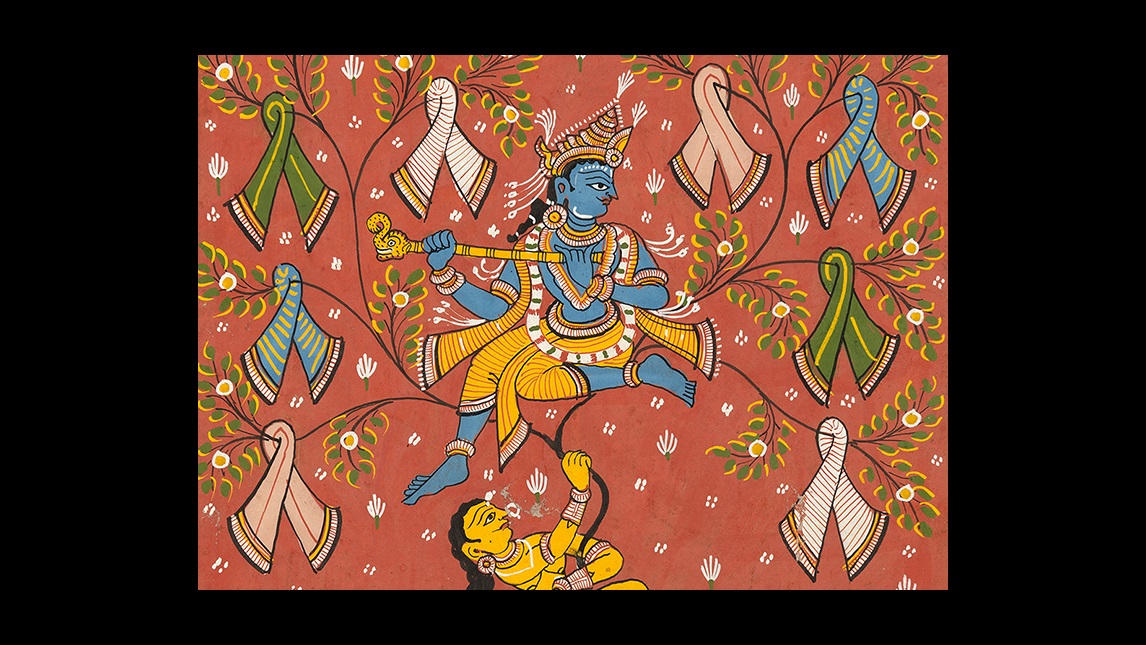From the Ronald M and Catherine H Berndt Collection
11 July 2020 – 12 June 2021
Curated by Michael Houston and Sofie Nielsen
Presented By the Berndt Museum of Anthropology in Collaboration with Lawrence Wilson Art Gallery
Expressions of India brings together a small collection of Indian paintings from the Ronald and Catherine Berndt Bequest Collection. The featured paintings belong to an extensive collection of over 950 examples of cultural material from across Asia, assembled by the Berndt’s throughout their career as internationally renowned anthropologists. Lovingly cared for and displayed in their sprawling Peppermint Grove residence, this collection was essentially hidden from the outside world until bequeathed to the Berndt Museum following Catherine’s passing in 1994. Comparative to their collections of Aboriginal and Torres Strait Islander material, which dominated much of their life’s research, the Berndt’s collection of Asian cultural material served as both vivid expressions of social relations and as a means of elucidating complex cultural mythologies.
The Berndt’s had a long-standing interest in India, grounded in their study of religion and its interaction with social anthropology. Generous funding from the Indian Grants Commission made it possible for Ronald and Catherine to travel extensively throughout India in 1965, where they visited university departments of anthropology and sociology across the country, as well as some of the temples and sites depicted in this exhibition.
Fully comprehending and acknowledging the significance of our place within the Indian Ocean Rim, Ronald and Catherine sought to champion cross-institutional engagement through teaching and research in the field of anthropology and sociology between Australia and its neighbour nations, envisaging equal dedication to the study and celebration of Asian culture within Australian universities.
Expressions of India investigates three distinct groups of paintings from the Bequest Collection. The first, ‘Court’ paintings, a style of painting cultivated within the Rajput palace courts of the north-western province of Rajasthan. These intricate paintings from the eighteenth and nineteenth century reflect a long history of shifting cultural and political influences. The second group is a collection of Kalighat paintings from late nineteenth century Kolkata, in the north-eastern province of Bengal. The then lively capital of British India, bustling with pilgrims, merchants and tourists, Kolkata provided an endless source of interest in these economical and lightweight paintings on paper. The third group of paintings is the mid-twentieth century Pattachitra (cloth-painting) originating from the province of Odisha in eastern India. This folk-art practice centres around Jagganath Temple in Puri where a demand for pilgrim souvenirs and inexpensive, transportable conduits of devotion evolved.
The overall selection of works cut across social circumstance, place and time to provide a glimpse into pockets of everyday life from across India and from varying contexts. All three collections of painting explore scenes or depictions from Hindu-based narratives and scripture. The court paintings alone diverge into the secular, investigating portraiture, palace life, the complexities of matters of the heart and visual interpretations of poetry. While in many ways these three groupings of painting are distinct, an undeniable commonality exists in the manner in which they express and celebrate the rich history and culture of India.
To a large extent, the Berndt Museum’s exhibition program has long striven to honour the belief of Ronald Berndt that:
…if items of material culture are left to gather dust and immemorial labels in a museum, they are only dead things bereft of interest and meaning. Life needs to be breathed into them once more.
When considering the splendour of the cultural material showcased in Expressions of India, it is heartily hoped this exchange of invigoration be reciprocal.
Animation of Portrait of a King Riding a Composite Horse late 18th century. Jaipur, Rajasthan, India. Opaque watercolour and gold on paper, 38.2 x 30.5 cm. Bequest of RM & CH Berndt, Berndt Museum of Anthropology [1994/0904].
Acknowledgments
The Berndt Museum of Anthropology would like to acknowledge the Whadjuk Noongar people on whose traditional lands we meet and work on, we acknowledge and respect their continuing culture and unique role in the life of the region, and pay respect to Elders past, present and emerging.
This was our first endeavour at producing a digital exhibition and we would like to thank everybody who guided us through the process. Firstly, thank you to Dr. Vanessa Russ and Sarah Ridhuan for planting the seed of this project and laying the foundations of this exhibition. We are fortunate to work in an incredible team here at the Berndt Museum of Anthropology and are grateful for the continued support of Isobel Wise and Natalie Hewlett for their assistance in producing this exhibition. We would also like to acknowledge the ongoing support and contribution from the staff from the Cultural Precinct and Lawrence Wilson Art Gallery and would especially like to thank Megan Hyde, Denise Mitchell, Janice Lally and Erin Knight. Thanks to the team at Digital and Creative for their assistance in producing a digital platform for this exhibition.
This exhibition would not have been possible without the guidance of Professor Krishna Sen from the School of Social Sciences here at UWA. Researching and identifying the various narratives depicted in this exhibition could not have been done without your expertise and we are incredibly grateful for your assistance.




